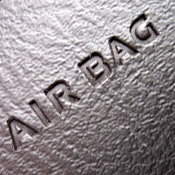
I can’t think of anyone who looks forward to buying auto insurance, particularly when they are paying too much.
Since consumers have many auto insurance companies to choose from, it can be diffult for consumers to locate the most affordable provider.
It’s a good habit to check auto insurance prices occasionally because rates trend upward over time. Just because you had the lowest price for Element insurance on your last policy a different company probably has better rates today. Starting now, block out anything you think you know about auto insurance because I’m going to teach you the things you must know in order to find lower rates on auto insurance.
Where Can I Get Cheap Auto Insurance?
The are a couple different ways to compare rate quotes from local auto insurance companies. The easiest way to find the cheapest Honda Element insurance rates is to get quotes online. It is quite easy and can be accomplished using a couple different methods.
- The most efficient way consumers can make multiple comparisons is a comparison rater form (click to open form in new window). This method prevents you from having to do a different quote for each company. A single form will return quotes from several companies.
- A more time consuming way to compare prices consists of visiting each individual company website to complete a price quote. For sake of this example, let’s say you want comparison quotes from Auto-Owners, State Farm and Progressive. You would have to spend time on each company’s site and enter your information, and that’s why the first method is more popular. For a list of links to companies insuring cars in your area, click here.
However you get your quotes, make darn sure you compare exactly the same coverages for each price quote. If each company quotes unequal deductibles or liability limits it will be very difficult to determine the lowest rate for your Honda Element. Just a small difference in coverages can result in a big premium difference. And when quoting auto insurance, remember that more quotes provides better odds of finding the best offered rates.
Save money by taking advantage of these eight discounts
Properly insuring your vehicles can get expensive, but discounts can save money and there are some available to reduce the price significantly. Larger premium reductions will be automatically applied when you quote, but a few need to be asked for before you get the savings.
- Bundle and Save – If you have multiple policies with one insurance company you may earn 10% to 20% off each policy.
- Club Memberships – Belonging to a professional or civic organization could qualify you for a break on auto insurance for Element insurance.
- Good Student – A discount for being a good student can earn a discount of 20% or more. This discount can apply up to age 25.
- Discounts for Safe Drivers – Insureds without accidents may receive a discount up to 45% less for Element insurance than their less cautious counterparts.
- Government Employees – Being employed by or retired from a federal job may qualify you for a discount for Element insurance with certain companies.
- Driver’s Ed – Require your teen driver to complete a driver education course in school.
- E-sign – Certain companies give back up to $50 for buying a policy and signing up over the internet.
- Homeowners Pay Less – Simply owning a home can save you money because maintaining a house requires personal responsibility.
A little note about advertised discounts, most discount credits are not given to the entire cost. The majority will only reduce the cost of specific coverages such as comprehensive or collision. So even though it sounds like adding up those discounts means a free policy, auto insurance companies aren’t that generous. Any amount of discount will cut your premiums.
For a list of providers who offer auto insurance discounts, click here.
When should I use an insurance agent?
When buying coverage, there isn’t really a cookie cutter policy. Everyone’s needs are different and your policy should reflect that. Here are some questions about coverages that may help you determine if your situation might need an agent’s assistance.
- Can I afford to buy a different vehicle if my Honda Element is totaled?
- Is my Honda Element covered for flood damage?
- When should I not file a claim?
- Is my dog or cat covered if injured in an accident?
- Do I qualify for additional discounts?
- Why am I be forced to buy a membership to get insurance from some companies?
- Exactly who is provided coverage by my policy?
- Is borrowed equipment or tools covered if stolen or damaged?
- Will my vehicle be repaired with OEM or aftermarket parts?
If it’s difficult to answer those questions, you might consider talking to a licensed insurance agent. To find lower rates from a local agent, complete this form or you can go here for a list of companies in your area.
Can switching companies really save?
21st Century, Allstate and State Farm regularly use ads on TV and radio. All the companies have a common claim that you’ll save big if you move to them. How do they all make almost identical claims? It’s all in the numbers.
Insurance companies have a preferred profile for the right customer they prefer to insure. A good example of a preferred risk might be between the ages of 40 and 55, has no prior claims, and chooses high deductibles. A customer who meets those qualifications will get very good rates and most likely will save when they switch companies.
Potential customers who don’t measure up to this ideal profile will be quoted higher prices and this can result in business not being written. Company advertisements say “people who switch” not “everyone that quotes” save money. This is how insurance companies can make the claims of big savings.
This emphasizes why you absolutely need to get a wide range of price quotes. It’s not possible to predict which company will fit your personal profile best.
Coverage specifics
Understanding the coverages of your auto insurance policy can be of help when determining appropriate coverage at the best deductibles and correct limits. The coverage terms in a policy can be confusing and nobody wants to actually read their policy. Below you’ll find the normal coverages offered by auto insurance companies.
Liability insurance – Liability insurance protects you from damages or injuries you inflict on a person or their property in an accident. It consists of three limits, bodily injury for each person, bodily injury for the entire accident, and a limit for property damage. You might see limits of 25/50/25 that means you have $25,000 bodily injury coverage, $50,000 for the entire accident, and property damage coverage for $25,000. Another option is one limit called combined single limit (CSL) which limits claims to one amount rather than limiting it on a per person basis.
Liability insurance covers things such as repair bills for other people’s vehicles, bail bonds, structural damage, pain and suffering and funeral expenses. How much coverage you buy is your choice, but buy as much as you can afford.
Medical payments and PIP coverage – Personal Injury Protection (PIP) and medical payments coverage provide coverage for expenses for dental work, pain medications, rehabilitation expenses, chiropractic care and funeral costs. They can be utilized in addition to your health insurance policy or if there is no health insurance coverage. Coverage applies to you and your occupants as well as being hit by a car walking across the street. PIP is not an option in every state and may carry a deductible
UM/UIM (Uninsured/Underinsured Motorist) coverage – Uninsured or Underinsured Motorist coverage protects you and your vehicle from other drivers when they either have no liability insurance or not enough. Covered losses include injuries to you and your family and also any damage incurred to your Honda Element.
Because many people have only the minimum liability required by law, it only takes a small accident to exceed their coverage. That’s why carrying high Uninsured/Underinsured Motorist coverage should not be overlooked. Usually your uninsured/underinsured motorist coverages do not exceed the liability coverage limits.
Comprehensive auto coverage – Comprehensive insurance coverage pays to fix your vehicle from damage OTHER than collision with another vehicle or object. A deductible will apply then the remaining damage will be covered by your comprehensive coverage.
Comprehensive coverage pays for claims like damage from getting keyed, hitting a bird, a broken windshield, hail damage and a tree branch falling on your vehicle. The highest amount you’ll receive from a claim is the actual cash value, so if the vehicle’s value is low it’s probably time to drop comprehensive insurance.
Collision coverage – This pays to fix your vehicle from damage caused by collision with a stationary object or other vehicle. You first must pay a deductible then the remaining damage will be paid by your insurance company.
Collision insurance covers things like hitting a mailbox, rolling your car, scraping a guard rail, damaging your car on a curb and colliding with a tree. Collision is rather expensive coverage, so analyze the benefit of dropping coverage from vehicles that are 8 years or older. You can also choose a higher deductible in order to get cheaper collision rates.
More comparisons equals lower rates
As you prepare to switch companies, it’s not a good idea to skimp on critical coverages to save a buck or two. There are a lot of situations where drivers have reduced physical damage coverage only to discover later that their decision to reduce coverage ended up costing them more. Your focus should be to purchase a proper amount of coverage for the lowest price while not skimping on critical coverages.
You just learned quite a bit of information on how to lower your Honda Element insurance rates. The key concept to understand is the more providers you compare, the higher the chance of saving money. You may even discover the lowest rates come from a smaller regional carrier. Regional companies may have significantly lower rates on certain market segments than the large multi-state companies such as Allstate, GEICO and Progressive.


